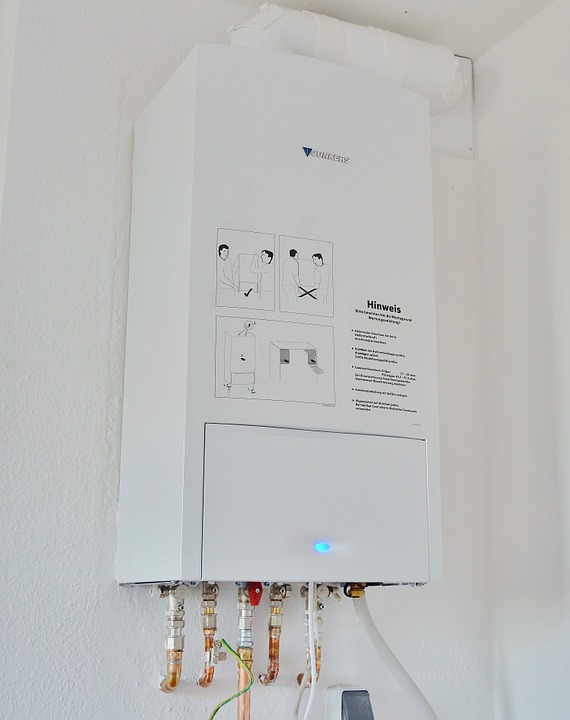
What to do When Your Water Heater Breaks
It’s incredibly frustrating to come back after a long day at the office to find that you’re not getting any hot water in the shower.
Water heaters, whether they’re electric or gas, can typically last between 8 to 12 years, provided you take good care of them. And if you find that your water heater is leaking or has completely failed, you need to repair it as soon as possible before your water supply becomes ice cold. If you need to determine how long your water heater should last, then visit this site.
If you’re asking yourself “how do I know if my hot water heater is broken,” then that’s exactly what this article aims to help you out with. After finding out exactly why your water heater has malfunctioned, we’re going to show you how to fix it too.
Common Signs of a Leaking or Malfunctioning Water Heater
Alternating Temperatures
At times, your water supply is hot, and other times, it’s cold. It might not be a big deal at first, but if this constant fluctuation continues, then it might be an indication that your water heater has some problems that will only worsen with time if you don’t take care of it immediately.
To be certain, you need to ensure that the water heater’s thermostat is configured to the desired temperature. To do this, use a marker or a tape to mark the setting before adjusting it. This way, you’ll know there’s something wrong with the water heater when the settings on the thermostat change to a different position.

But if you find that the water is still too cold or hot despite the thermostat being set at the right temperature, then you need to consider either replacing the thermostat or perhaps the heating element.
Defective Water Pump
A defective water pump is a sure sign that you need to replace your water heater. You’ll need to consider this if you notice any of the following signs or symptoms:
- Leaks
- Noises
- Rusting in either the water or the tank
- Water not heating up.
Leaking
A common sign of a broken water heater is when it starts leaking. You’ll notice that this is the case when you find a pool of water right by your water heater tank, which is quite common in those tanks that are at least six years old. However, there isn’t an easy fix for this issue. The only way to settle this matter is to replace your tank as soon as possible before it results in flooding or even property damage.
Decreased Water Flow
When you start noticing signs of reduced water flow, it may serve as an indication that there is sediment or scale buildup in the water heater or within the plumbing that connects your equipment to several parts of your house. This is something that you should never put out for later.
Poor Water Quality
Another way to tell that your water heater is broken is by inspecting your water supply. This is determined by inspecting your water heater tank for sediments and other types of debris. You’ll notice that this is the main culprit when your water starts looking muddy or rusty. This phenomenon also results in stagnant water that often produces unpleasant odors or gives your water a metallic taste.
Now that we’ve covered all the telltale signs of a water heater failing, we prepared a list of solutions regarding what to do when a water heater breaks.
What to do When Your Water Heater is Malfunctioning

Turn the Water Off
First, you’ll have to turn off your water heater’s valve. If this doesn’t work, then shut off your house’s main water supply. If you have a burst water heater, then look for the cold-water supply pipe from your house’s main water line to the top of the water heater. Turn the cold water supply off by twisting the valve in a clockwise motion. It will stop the flow of water that is still filling the hot water heater. You’ll know it’s working when the water starts spilling out from the burst seams.
Turn the Power Off
Turning off the power supply is essential so that your heater’s gas or electric heating element doesn’t pose any potential fire or power hazard. Even if you drain the water out, the tank can still be hot, which in turn would waste energy and start a fire hazard. Before it comes to that, you need to find and then flip the breaker for your water heater from the breaker box. If you have a gas-powered water heater, turn the gas line leading to the heater off. Then leave your house until the natural gas that is left behind has completely dissipated.
Drain the Heater
Now drain the water from your water heater’s tank by attaching a hose to the tank’s drain valve. Now run the other side of the hose to a lower area where you can drain the settlement-filled water without doing any more damage. Now open the drain valve. If there’s a problem turning the valve, then use a screwdriver.
Open Pressure Relief Valve
As you’re draining the water from the drain valve, do flip the pressure relief valve to prevent any vacuum from forming. Be a little cautious at this point as the water can be quite hot.
Use Cold Water for Rinsing
Once the water from the heater tank has been drained out, flush out the rest of the sediment from the tank using cold water.




